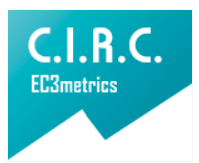Phonoaudiological diagnoses and non-motor symptoms in patients with Parkinson’s disease
Diagnósticos Fonoaudiológicos y Síntomas no Motores en Pacientes con Enfermedad de Parkinson
Main Article Content
Objective: This descriptive study was aimed at knowing the clinical-epidemiological profile of Parkinson's disease and the coexistence between non-motor symptoms and speech therapy symptoms. Method: The sample consisted of 34 people with idiopathic Parkinson's (26 men and 8 women), whose medical records were analyzed to describe the relationship between speech therapy symptoms, such as hypophonia, dysprosodia, dysarthria and dysphagia, with non-motor symptoms such as: gastrointestinal disorders, depression, sleep disorders and cognitive impairment. Results: The results indicate that the people with Parkinson's were between 25 and 86 years old. Regarding the phase, they were classified as: stage I, 11.7%, II, 17.6%, III, 47%, IV, 14.7%, and V, 8.8%. 47% came to the Speech Therapy service in an advanced stage of Parkinson's disease. The most frequent non-motor symptoms were sleep disorders (67.6%), depression (58.8%), gastrointestinal disturbances (29.4%) and cognitive impairment (15%). Speech and language symptoms were distributed as follows: dysprosodia (38%), hypophonia (33%), dysarthria (18%) and dysphagia (11%). Conclusion: sleep disorders and depression could have a greater negative impact on the speech and language performance of people with Parkinson's.
Downloads
Publication Facts
Reviewer profiles N/A
Author statements
Indexed in
- Academic society
- Bogotá: Corporación Universitaria Iberoamericana
- Publisher
- Bogotá: Corporación Universitaria Iberoamericana
Article Details
Aracil-Bolaños, I., Sampedro, F., Marín-Lahoz, J., Horta-Barba, A., Martínez-Horta, S., Botí, M., ... y Izquierdo, C. (2019). A divergent breakdown of neurocognitive networks in Parkinson’s Disease mild cognitive impairment. Human brain mapping, 40(11), 3233-3242.
American Speech and Hearing Association. ASHA. (2005). The roles of speech-language pathologist working with individuals with dementia-based comunication disorders: position statement. Rockville, MD: Author.
Atkinson-Clement, C., Sadat, J., y Pinto, S. (2015). Behavioral treatments for speech in Parkinson’s disease: meta-analyses and review of the literature. Neurodegenerative Disease Management, 5(3), 233-248.
Bayles, K., y Tomoeda, C. (2007). Cognitive-Comunication Disorders of Dementia. United Kingdom: Plural Publishing.
Benito-León, J. (2018). Epidemiología de la enfermedad de Parkinson en España y su contextualización mundial. Revista Neurología, 66, 125-134
Cilia, R., Tunesi, S., Marotta, G., Cereda, E., Siri, C., Tesei, S., Zecchinelli, A. L., Canesi, M., Mariani, C. B., Meucci, N., Sacilotto, G., Zini, M., Barichella, M., Magnani, C., Duga, S., Asselta. R., Soldà, G., Seresini, A., Seia, M., Pezzoli, G., y Goldwurm, S. (2016). Survival and dementia in GBA-associated Parkinson’s disease: the mutation matters. Ann. Neurol, 80, 662–673.
Dashtipour, K., Johnson, E., Kani, C., Kani, K., Hadi, E., Ghamsary, M., Pezeshkian, S. y Chen, J. J. (2010). European Parkinson ́s Disease Association. Life with Parkinson ́s: Non motor symptoms. Brussels: EPDA.
Fasano, A. (2015). Gastrointestinal dysfunction in Parkinson’s disease. Lancet Neurol, 14, 625–639.
Hatcher, J. M., Pennell, K. D., y Miller, G. W. (2008). Parkinson’s disease and pesticides: A toxicological perspective. Trends in pharmacological sciences, 29, 322-329.
Hoehn, M. M., y Yahr, M. D. (1967). Parkinsonism: onset, progression and mor talit y. Neurology, 17, 427-442.
Holtgraves, T., y McNamara, P. (2009). Linguistic Correlates of Asymmetric Motor Symptom Severity in Parkinson’s Disease. Brain and cognition, 72, 189-196.
Jellinger, K. A. (2015). Neuropathobiology of non-motor symptoms in Parkinson disease. Journal Neural Transm, 122, 1429–1440.
Lees, A. J., Hardy, J., y Revesz, T. (2009). Parkinson’s disease. Lancet, 29, 374-384.
Mahieux, F., Michelet, D., y Manifacier, M. J. (1995). Mini Mental Parkinson Te s t . Behav Neurol, 8(1), 15-22.
Mestas Hernández, L., y Salvador Cruz, J. (2013). Analysis of cognitive performance in patients with Parkinson disease: the importance of educational level. Revista de la Asociación Española de Neuropsiquiatría, 33(118), 245-255.
Miller, K. M., Okun, M. S., Fernandez, H. F., Jacobson, C. E., Rodriguez, R. L., y Bowers, D. (2007). Depression symptoms in movement disorders: comparing Parkinson ́s disease, dystonia and essential tremor. Movement Disorders, 22(5), 666-672.
Miller, N., Noble, E., Jones, D., y Burn, D. (2006). Hard to swallow: dysphagia in Parkinson’s disease. Age and Ageing, 35(6), 614– 618.
Miller, N., Noble, E., Jones, D., y Burn, D. (2006). Life with communication changes in Parkinson’s disease. Age and Ageing, 35, 235–239.
Miller, N., Andrew, S., Noble, E., y Walshe, M. (2011). Changing perceptions of self as a communicator in Parkinson’s disease: a longitudinal follow-up study. Disabil Rehabil, 33(3), 204-210.
Moya-Galé, G., Goudarzi, A., Bayés, À., McAuliffe, M., Bulté, B., y Levy, E. S. (2017). The Effects of Intensive Speech Treatment on Conversational Intelligibility in Spanish Speakers with Parkinson’s Disease. American Journal of Speech-Language Pathology, 27(1), 154-158.
Naoi, M., y Maruyama, W. (1999). Cell death of dopamine neurons in aging and Parkinson’s disease. Mech Ageing Dev, 111, 175-188.
O’Neil, K. H., Purdy, M., Falk, J., y Gallo, L. (1999). Dysphagia Outcome Severity Scale (DOSS). Dysphagia, 14(3), 139-45.
Pinho, S., y Pontes, P. (2002). Escala de evaluación perceptiva de la fuente glótica. Revinter, 1, 1-4.
Schapira, A. H. V., Chaudhuri, K. R., y Jenner, P. (2017). Non-motor features of Parkinson disease. Nat Rev Neurosci, 18(7), 435-450.
Schrag, A., y Schott, J. M. (2006). Epidemiological, clinical, and genetic characteristics of early-onset parkinsonism. Lancet Neurol, 5(4), 355–363.
Simón, T., y de Las Heras, G. (2018). Logopedia y enfermedades neurodegenerativas. Valencia: Nau Llibres. Stegemoller, E. L., et al. (2017). Therapeutic Singing as an Early Intervention for Swallowing in Persons with Parkinson’s Disease. Complementary Therapies in Medicine, 31, 1-27.
Stella, F., Bucken-Gobbi, L. T., Gobbi, S., y Sant’Ana-Simões, C. (2007). Síntomas depresivos y trastorno motor en pacientes con enfermedad de Parkinson. Revista Neurología, 45(10), 594-598.
Swales, M., Theodoros, D., Hill, A., y Russell, T. (2019). Communication service provision and access for people with Parkinson ́s disease in Australia: A national sur vey of speech-language pathologists. International Journal of Speech-Language Pathology, 21(6), 572-583.
Teive, H. (2005). Etiopatogenia da Doença de Parkinson. Neurociências, 13(4), 201-214.
Wengel, S. P., Bohac, D., y Burke, W. (2005). Depression in Parkinson ́s disease. Boca Raton: CRC Press.
World Health Organization (2006). Neurological disorders: public health challenge. Suiza: World Health Organization.71AretéISSN-L: 1657-2513 ART 20 (2) pág. 63 -71Cano Villagrasa, Suárez Torres & Valles Gonzalez

















